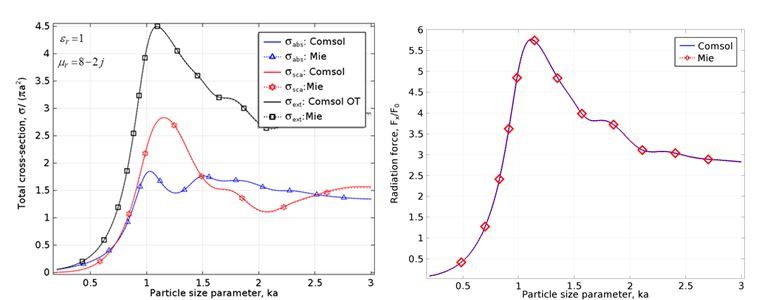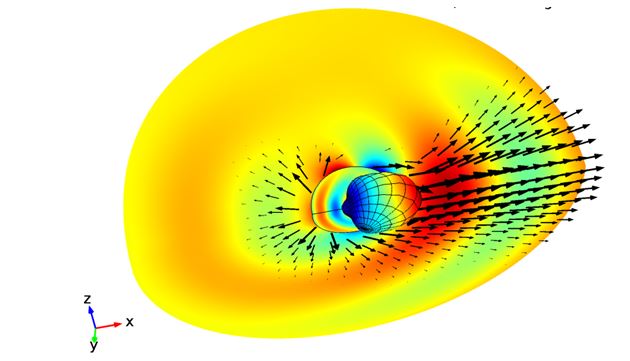Computational Analysis of Scattering of Electromagnetic Waves by Particles
A computational model of Mie scattering was developed using COMSOL Multiphysics® and its RF Module. It solves for the scattering off a dielectric, magnetic or metal spherical particle with radius a. The model geometry is shown in Figure 1.
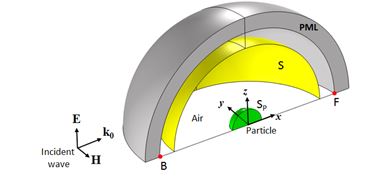
The air domain is truncated by a perfectly matched layer (PML) inserted to limit the extent of the model to a manageable region of interest. The solution inside the domain is not affected by the presence of the PML, which lets the solution behave as if the domain was of infinite extent. This layer absorbs all outgoing wave energy without any impedance mismatch that could cause spurious reflections at the boundary. The PML is useful in maintaining the solution at the desired level of accuracy and optimizing usage of computational resources. COMSOL also supports far-field calculations, which are done on the inner boundary of the PML domain where the near field is integrated. The surface S is used to calculate total scattered energy. An incident plane wave travels in the positive x-direction (see Figure 1), with the electric field polarized along the z-axis. Perfect magnetic conductor (PMC) and perfect electric conductor (PEC) boundary conditions are used on the x-z and x-y symmetry planes, respectively. The plane wave incident on the sphere is defined by its amplitude, wave vector in the air and circular frequency.
Results
COMSOL conveniently provides all the necessary functionality to calculate scattering integrals. Scattering characteristics for the three types of particles considered are shown in Figures 2, 3, and 4. The results of the computational analysis show good agreement with available experimental results (see references).
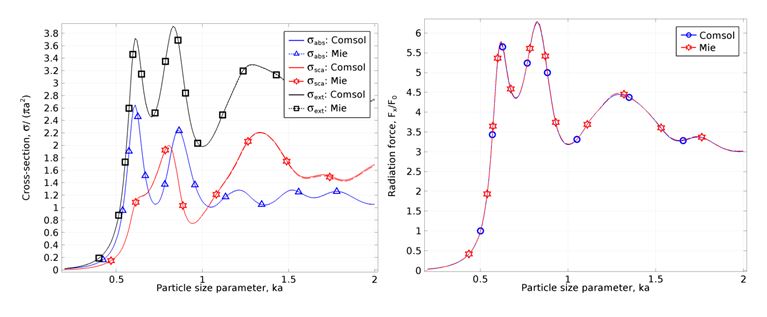
and relative permeability
Figure 3. Cross-section parameters and radiation force for a magnetic particle with relative permittivity and relative permeability
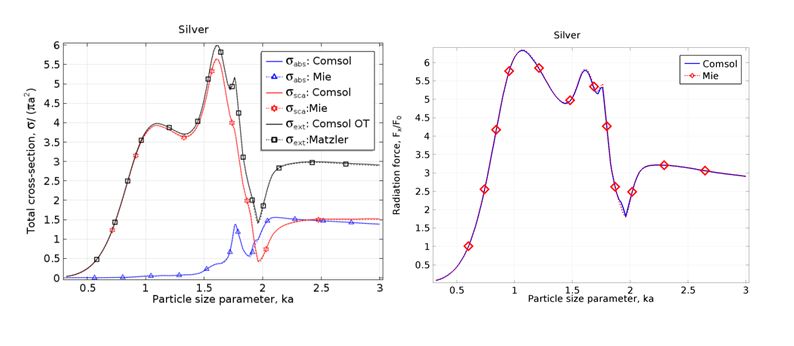
Simulation of Mie scattering problems enables visualization of the effects of small particles on an incident electromagnetic wave (see Figure 5) to allow better understanding of the interactions.
Figure 5: Distribution of the z-component of the electric field due to scattering of the incident electromagnetic wave by a particle of 0.1µm of 950 radius. The arrows show the time-averaged power flow of the relative fields at a frequency THz.
References
Mätzler, C.: MATLAB Functions for Mie Scattering and Absorption, Version 2, IAP Research Report, No. 2002-11, InstitutfürangewandtePhysik, Universität Bern, 2002.


